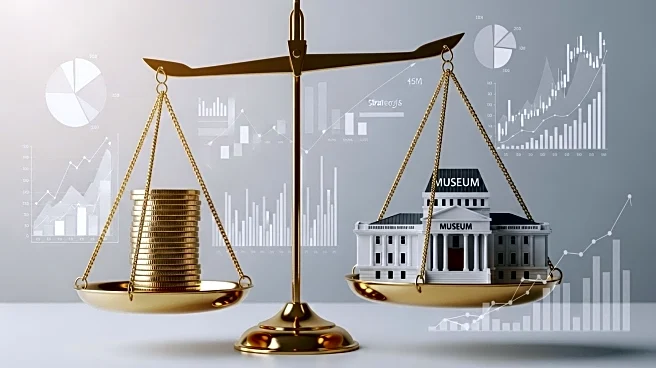What is the story about?
What's Happening?
Museums across the globe are facing significant financial challenges due to shrinking government budgets, reduced patron donations, and pressure on corporate sponsors. In response, these institutions are exploring new financial models to ensure their sustainability. The $85 trillion Great Wealth Transfer offers hope for future investment, but attracting the next generation of museum visitors and donors remains a challenge. Museums are shifting from relying on prestige to emphasizing transparency and meaningful engagement. Strategies include building endowments, diversifying revenue streams, leveraging partnerships, and embracing digital tools. For instance, the Louvre in France created an endowment fund in 2009, and the Tate in the UK launched its Future Fund to solidify its long-term budget. Museums are also selling limited edition prints and accepting cryptocurrency donations to diversify income.
Why It's Important?
The financial strategies being adopted by museums are crucial for their survival and growth in a rapidly changing economic environment. As public funding declines, museums must find alternative revenue sources to maintain operations and continue serving the public. These strategies not only help museums stay afloat but also redefine their relationship with patrons, emphasizing mutuality and shared values. By engaging the next generation of donors through transparency and meaningful participation, museums can secure long-term support. Additionally, embracing digital tools and partnerships can help museums reduce costs and increase efficiency, ensuring they remain relevant and accessible to diverse audiences.
What's Next?
Museums are likely to continue exploring innovative financial models and partnerships to secure their future. As they adapt to changing donor expectations, museums may increasingly focus on creating accessible entry points for patronage and emphasizing the impact of donations. Collaboration between institutions, such as the partnership between the National Gallery and Tate in the UK, may become more common, allowing museums to share resources and collections. The integration of digital tools and acceptance of cryptocurrency donations may also expand, providing new opportunities for engagement and revenue generation.
Beyond the Headlines
The shift in museum funding strategies reflects broader changes in societal values and expectations. As younger generations prioritize transparency and meaningful engagement, museums must adapt to remain relevant. This transformation may lead to a more democratized approach to philanthropy, where patrons are connected with museum staff at all levels. Additionally, the emphasis on digital tools and partnerships may reshape the institutional landscape, fostering collaboration and innovation. These changes could redefine the role of museums in society, making them more inclusive and responsive to diverse audiences.
AI Generated Content
Do you find this article useful?















